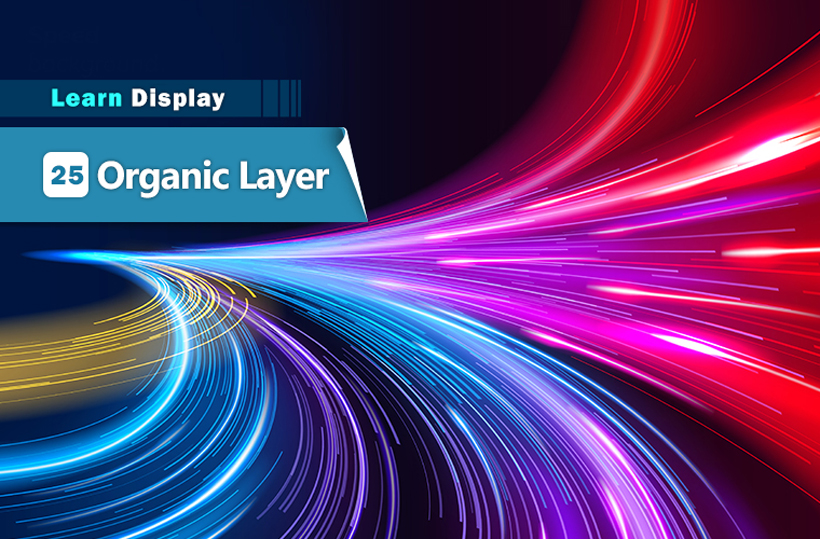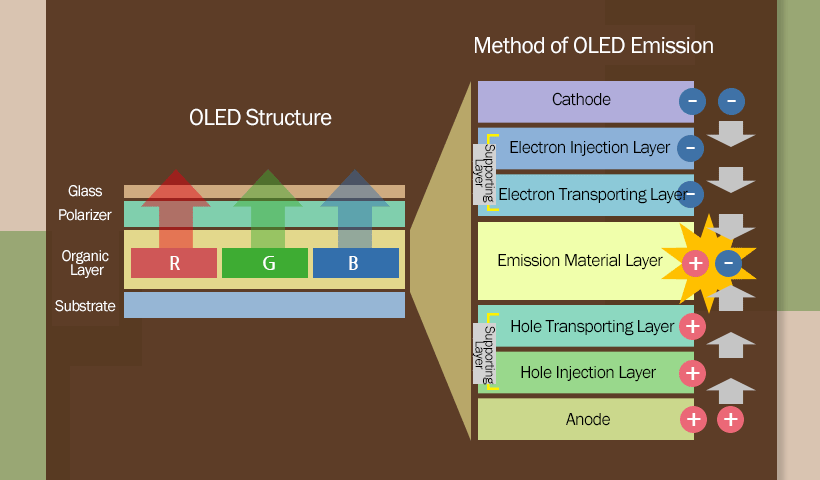
Organic layers in the structure of OLED display serve as a light emitter, consist of an emissive layer and ones that support light emission. The latter, supporting layers including Hole Injection Layer (HIL) and Hole Transport Layer (HTL) as well as Electron Injection Layer (EIL) and Electron Transport Layer (ETL), enable easier injection and transport of holes and electrons into Emissive Layer (EML).

OLEDs are a type of display that emits light when electricity flows: Once electrons and holes are combined, it results in light emission.
Electrons that migrate from the cathode and holes from the anode are transported into and combined in the Emission Material Layer (EML). To work this out, injection layers help electrons and holes quickly inject, while transport layers support fast transport of electrons and holes.
With this configuration, the injection layers facilitate the injection of holes and electrons, while transport layers help them transport into the EML.



